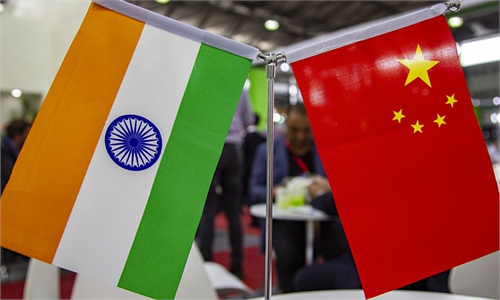
Photo: VCG
A contract manufacturer for Apple is moving six production lines from China to India in a bid to export $5 billion worth of iPhones from the South Asian country in addition to supplying to the domestic market, The Times of India reported Sunday.The development, if it turns out to be true, could mark the latest efforts of multinationals looking to diversify their manufacturing bases as production in China is coming under growing trade pressure.
Given the severity of the spreading coronavirus, the fact that India is still greatly valued by global giants like Apple may, to a certain extent, underscore its manufacturing potential, which could have some positive impacts on its future economic recovery.
For starters, the relocation of iPhone production lines is of symbolic significance for India's manufacturing sector. Since the iPhone is the representative brand of advanced manufacturing strength, Apple's choice of its production bases has long been seen as its recognition of a region's manufacturing capability.
The new facility will reportedly produce exported products for overseas markets, marking India's increased participation in the global value chain, which will also inject more confidence into its economic prospects.
In addition to Apple's contracted manufacturing, dozens of domestic and global smartphone makers including Samsung, Dixon Lava and Micromax have applied to India's $6.65 billion incentive fund to build mobile phone manufacturing plants in the country.
It seems that the Indian government is aiming to establish itself as the next global smartphone export hub after China.
While it is admirable for the government to have such an ambitious vision, it still should be pointed out that the glories of global giants like Apple cannot obscure the bottleneck of India's manufacturing development.
India is not advised to be too optimistic about its manufacturing capabilities, and there is still a long upward climb for its growth given some long-term challenges such as poor infrastructure, shortage of skilled workers and demographic diversity, among others. Because of these difficulties, most foreign smartphone makers or contract manufacturers are using their Indian plants as assembly sites to avoid the high tariffs imposed by the government on imported smartphones.
There is uncertainty about whether these production lines and plants will actually take shape or supply to overseas markets as planned. In January, Foxconn canceled its $5 billion plan to build a manufacturing facility in India. And it is conceivable that the coronavirus will only slow down relevant work processes and aggravate the uncertainty.
Nonetheless, there is also no need to be overly pessimistic about the outlook. India has already become the second-largest smartphone market in the world, trailing only behind China. Global giants will certainly continue to tap into its potential as part of their diversification efforts. During the process, its manufacturing capacity will improve, as long as it is able to make down-to-earth changes to overcome the bottleneck that is holding it back.



